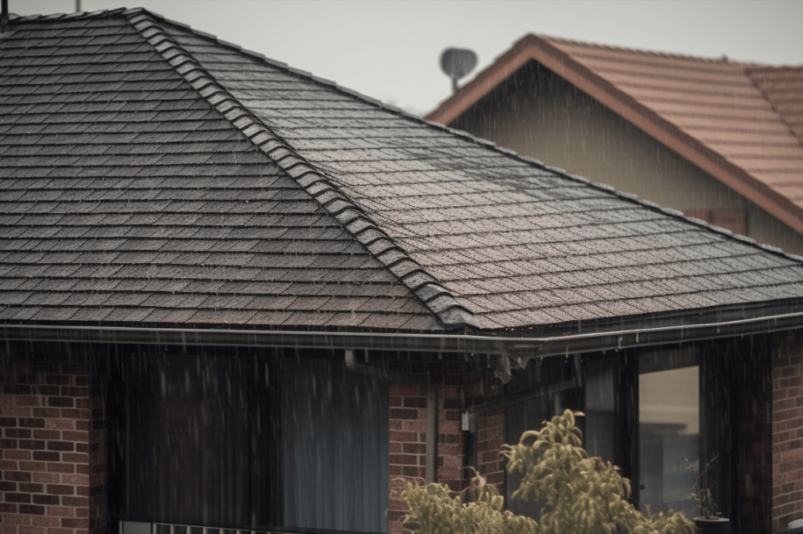
Roof flashing is one of those construction elements that often goes unnoticed but plays a vital role in keeping your home dry and damage-free. Among the various types of flashing used in roofing systems, kick-out flashing deserves special attention. The objective of this post is to provide you with a comprehensive understanding of what kick-out flashing is, its importance, and how it functions to protect your home from water damage.
What is Flashing?
Flashing is a construction material used to seal and protect joints, such as those between a roof and a wall or chimney, from water infiltration. Typically made from metal, plastic, or composite materials, flashing acts as a barrier that directs water away from these vulnerable areas, preventing leaks, rot, and other forms of water damage. Flashing is an integral part of any roofing system and is commonly used around vents, chimneys, and where the roof meets walls.
What is Kick-Out Flashing?
Kick-out flashing, also known as diverter flashing, is a specialized type of flashing designed to handle a very specific problem: the point where the roof edge meets a vertical sidewall, often near gutters or downspouts. This is a critical junction that, if not properly managed, can lead to significant water damage inside the walls or foundation of the building.
Design and Functionality
The design of kick-out flashing is unique. Unlike standard flashing, which is usually flat or slightly angled, kick-out flashing features a flared “kick-out” end. This flared end is engineered to channel water horizontally away from the wall and directly into the gutter system. This is crucial for preventing water from running down the side of the house, which can lead to a variety of problems such as paint damage, siding rot, and even foundational and structural issues.
Material Choices
Kick-out flashing is commonly made from durable, corrosion-resistant materials to withstand the elements. The most frequently used materials include:
- Galvanized Steel: Offers good durability and is cost-effective but can corrode over time.
- Aluminum: Lightweight and rust-resistant, but less durable than steel.
- Copper: Highly durable and offers a premium look, but is more expensive.
Compatibility and Sizing
Kick-out flashing is compatible with various types of roofing materials, including asphalt shingles, metal roofing, and slate. However, the size and type of kick-out flashing you’ll need can vary depending on the roofing material and the specific architectural features of your home. It’s crucial to consult with a roofing professional to determine the appropriate size and type of kick-out flashing for your project.
Building Codes and Regulations
It’s essential to note that the installation of kick-out flashing is not just a best practice but is often required by building codes. For example, the International Residential Code (IRC) specifies the need for kick-out flashing to prevent water from entering the wall and roof through joints.
Importance of Kick-Out Flashing
Kick-out flashing serves a critical role in safeguarding your home against water damage. Without it, water can easily seep into the walls, leading to a host of problems such as:
- Mold and Mildew: Moisture trapped in the walls can lead to the growth of mold and mildew, posing health risks to the occupants.
- Structural Damage: Over time, water infiltration can weaken the structural integrity of the building, leading to costly repairs.
- Insulation Damage: Wet insulation is less effective, leading to increased energy costs.
By directing water away from the wall and into the gutter, kick-out flashing acts as a first line of defense against these issues.
Installation Best Practices
Proper installation of kick-out flashing is crucial for its effectiveness. Here are some best practices:
- Professional Installation: Always consult a roofing professional to ensure that the kick-out flashing is installed correctly.
- Sealing Joints: Ensure that all joints are sealed to prevent any water leakage.
- Compatibility: Make sure that the kick-out flashing material is compatible with your roofing and wall materials to avoid corrosion or other adverse reactions.
Signs You Need to Replace or Install Kick-Out Flashing
Be vigilant for signs that indicate the need for new or replacement kick-out flashing:
- Water Stains: On the interior or exterior walls.
- Peeling Paint: Near the area where the roof meets the wall.
- Visible Damage: Such as rust or corrosion on the existing flashing.
Frequently Asked Questions
- Is kick-out flashing mandatory?
- In many jurisdictions, yes. Building codes like the International Residential Code (IRC) often require it.
- Can I install kick-out flashing myself?
- While it’s possible, professional installation is strongly recommended for best results.
- How often should kick-out flashing be replaced?
- The lifespan depends on the material used but expect to inspect it every 5-10 years.
Final Thoughts
Kick-out flashing may seem like a minor component in a roofing system, but its role is vital. By understanding what kick-out flashing is and ensuring its proper installation and maintenance, you can significantly reduce the risk of water damage to your home. Thank you for reading, and we hope this guide has been informative and helpful in your roofing journey.





